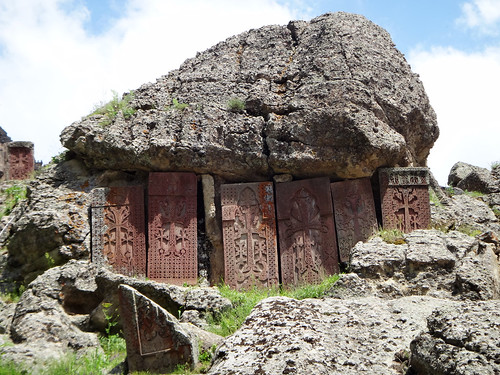Ararat
Das armenische Wappen ist viergeteilt in rot und blau und zeigt die Wappen der vier armenischen Königshäuser Artaschesian, Arschakuni, Bagratuni und Rubinian (Königreich Kleinarmenien).
Auf einem goldenen Mittelschild enthält es den Berg Ararat, auf dem die Konturen der Arche Noah dargestellt sind. Links (heraldisch rechts) findet sich ein goldener Adler und rechts (heraldisch links) ein goldener Löwe, als Wappenhalter den Schild haltend und beide widersehend. Sie sind Symbole für Geisteskraft und Macht, Standhaftigkeit und Mut.
Der Ararat ist das nationale Symbol und … im armenischen Wappen abgebildet. Dazu erzählt mir Robert eine … Anekdote: „Bei einer Konferenz, an der Vertreter der Türkei und Sowjetarmeniens teilnahmen, kam es zu einer heftigen Diskussion über dieses Wappen. Die Türken meinten, dass es nicht anginge, dass darin der Ararat abgebildet sei, denn dieser befinde sich in der Türkei, gehöre also den Türken. Das sei kein gültiges Argument, entgegneten die Armenier. Denn schließlich sei auf der türkischen Fahne der Mond abgebildet. Und der befinde sich, wie ja wohl allgemein bekannt sei, auch nicht auf türkischem Territorium.“
(aus: Barbara Denscher Reportage Armenien. Im Schatten des Ararat)






















